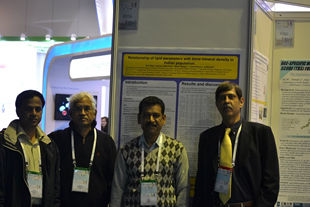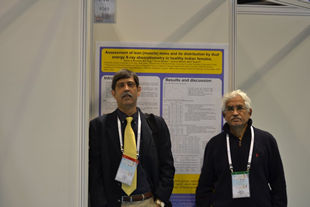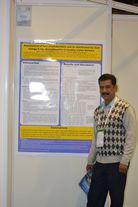
IOF-Regionals 4th Asia-Pacific Osteoporosis Meeting, 12-15 December 2013 at Hong Kong
Asia-Pacific osteoporosis meeting was held at Hong Kong convention and exhibition centre from 12-15 December 2013. Opening ceremony was crisp with local flavor and setting agenda for the academic feast.
Dr Kanis on 13th highlighted the differences in prevalence in osteoporosis in different countries and cultures in Asia-Pacific region with relation to economic and life style parameters.
The next day’s scientific program included the much awaited Asia Pacific audit 2013 which was presented by Dr Ambrish Mithal. He gave a glimpse of prevalence, differences and difficulties in evaluation and treatment of osteoporosis in all countries in this audit. This audit report provides new and updated information about the status of osteoporosis in the region. It has been projected that more than 50% of fractures in the world will occur in Asia by 2050.The other worrying trends impacting on musculoskeletal health include urbanization and widespread vitamin D insufficiency. In addition to the 14 countries in the 2009 version, it now includes Australia and New Zealand.
Dr Seeman in his plenary lecture updated on pathogenesis of bone fragility, its implications on treatment and current understanding of osteoporosis. A round table conference was held on postmenopausal women and bone health, which discussed current views on hormone replacement therapy, selective estrogen receptor modulators, experience with denosumab in Chinese women and nutritional requirements.
Dr Paul Mitchell from New Zealand spoke on secondary fracture prevention with concept of “Capture the fracture”. As occurrence of fragility fracture indicates presence of osteoporosis, and these subjects are at high risk of second fragility fracture, these subjects are ideal candidate for treatment even without bone mineral density measurements. This will be further helpful to prevent hip fracture. Hip fractures occur at older population than vertebral fractures. If all vertebral fractures can be captured and treated, it can prevent morbidity and mortality associated with hip fractures.
On 14th morning “Meet the Expert” session was organized in small groups. Dr Ferrari led the discussion on “Fracture in Childhood: Is it Osteoporosis”. All participants discussed the need for better understanding of childhood fracture. When one should order measurement of bone mineral density in childhood? How to evaluate these children? What is juvenile osteoporosis? How should these children be treated? There is several gray areas which requires further studies. In plenary session, healing of fracture, surgery and repair was discussed by eminent orthopedicians and endocrinologists. This was followed by round table discussion on state of art in diagnosis of spinal fracture, value of balloon kyphoplasty/vertebroplasty, and rehabilitation of patients.
In the afternoon session, the therapy of osteoporosis was highlighted in plenary lectures. This included classical antiresoptives, anabolic therapy and newer biological compounds. The encouraging results with newer therapy with Cathepsin K inhibitor (Odanacitib) was highlighted, which not only act as anti-resorptive agent but also has bone anabolic properties.
On 15th plenary session was held with focus on osteoarthritis. It covered the topics on epidemiology of osteoarthritis, differences in osteoporosis and osteoarthritis, assessment of clinical and structural outcomes of various therapies, and novel treatment strategies in osteoarthritis.
The last session was devoted to muscle biology and clinical fragility with current understanding of physiological changes in ageing skeletal muscle and concept of sarcopenia.








